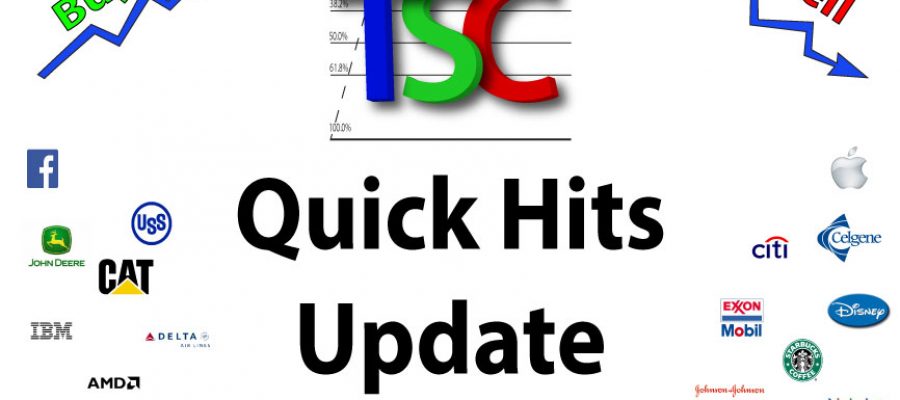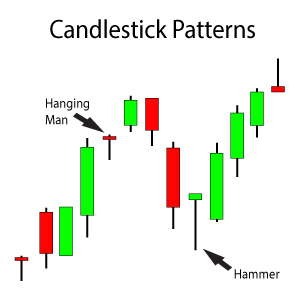 It's time for the holidays and discounts! Electronics and other gift items aren't the only thing on sale during the holidays. It appears some stocks are trading at discounts as well! So let's go bargain hunting and start creating a stock wish.
It's time for the holidays and discounts! Electronics and other gift items aren't the only thing on sale during the holidays. It appears some stocks are trading at discounts as well! So let's go bargain hunting and start creating a stock wish.
During a bear market like we are currently in, it is extremely important to consider creating a stock wish list. Having a list handy with target prices in mind will keep you from overpaying for stocks. They say you can't time the markets, I disagree.
The goal while you are creating a stock wish list is to not only find the next winning stock but to try and identify any strong sectors if possible. Stocks in top rated sectors will outperform similar stocks in lesser performing sectors.
So what sectors will be the leaders of the next uptrend? Let's review a whole bunch of charts and see if any patterns or trends come to the forefront. This article will review price targets and trends for the following companies, listed alphabetically by ticker symbol:
- Apple (AAPL)
- Bausch Health Care (BHC)
- The Walt Disney Company (DIS)
- Facebook (FB)
- General Electric (GE)
- I Am Gold (IAG)
- Micron Technologies (MU)
- Nike (NKE)
- Sirius XM Holdings (SIRI)
- Starbucks (SBUX)
- Whirlpool Corporation (WHR)
- Financial Select Sector SPDR ETF (XLF)
I even take a look at the current Point & Figure price targets for the NASDAQ to see how those relate to the patterns and trends identified on the individual company charts.
I've tried to use a cross section of analytical techniques as well. There's a lot to review so let's dive into the first chart starting with Apple.
Apple (AAPL)
This first chart for Apple (AAPL) is a 20 year monthly candlestick chart. I chose a 20 year monthly candlestick chart in order to show 3 different Fibonacci Extension Tools I placed on the chart.
Since it is a longer 20 year time frame on the chart, I chose monthly candlesticks to help remove some of the clutter from the chart. A 20 year chart with weekly candlesticks would be a lot more cluttered with smaller green and red candlesticks mashed together.
Apple (AAPL) has surpassed the Golden Ratio of its first green tool by a landslide. The Golden Ratios from the 2nd and 3rd tools have both been met as well.
Apple's current pullback and price reversal started after lingering above the last 161.8% Target Lie, the one from the blue Fibonacci Extension Tool.
The MACD Histogram on a monthly candlestick chart shows longer-term momentum. In AAPL's case, it illustrates longer-term selling momentum that just began. Historically for AAPL's share price, when a MACD Histogram is just beginning to show selling momentum it is just entering into a longer-term consolidation. AAPL has already dropped $68 from its high and is now just beginning to show selling momentum!?
The likelihood of AAPL re-testing the open gap-up area I identified on the chart is very high when considering the MACD Histogram that is just beginning to show selling momentum. Add to that the fact that most gap-ups tend to close at some point and the probability looks high.
Bausch Health Care (BHC)
This next chart is a 2 year weekly candlestick chart for Bausch Health Care (BHC). It has made a series of higher highs and higher lows over the last 2 years since bottoming out. If BHC's share price is around the gray shaded box when I think the NASDAQ is stabilizing, I will look to initiate a long position with the stock.
I've made a projection of BHC's breakout possibility in a previous article for the company. I calculated some nice upside price targets for BHC's share price. Picking up shares in the gray shaded box would be the icing on the cake. You can refer to some of those upside calculations in the Idea Chamber (member's forum).
In the short to medium term though, the MACD Histogram on this weekly chart shows increasing selling momentum still which should continue as BHC moves towards the $16.25 - $18 price level - the area of the gray shaded box above.
If you are creating a stock wish list, Bausch Health Care is one that should be strongly considered, especially if shares can be purchased in the $16.25 - $18 target pullback range.
The Walt Disney Company (DIS)
This next chart for The Walt Disney Company (DIS) is a 5 year monthly candlestick chart. I've placed a major supporting trendline and a Fibonacci Retracement Tool on the chart. This longer-term chart indicates to start looking at reversal on shorter-term charts around the $…...
If you want to continue reading this article about creating a stock wish list, you must first login.
This article review price targets for a lot of companies.
If you are not a Trendy Stock Charts member, consider joining today! There are several different subscription plans available.

















2 Comments
Leave your reply.